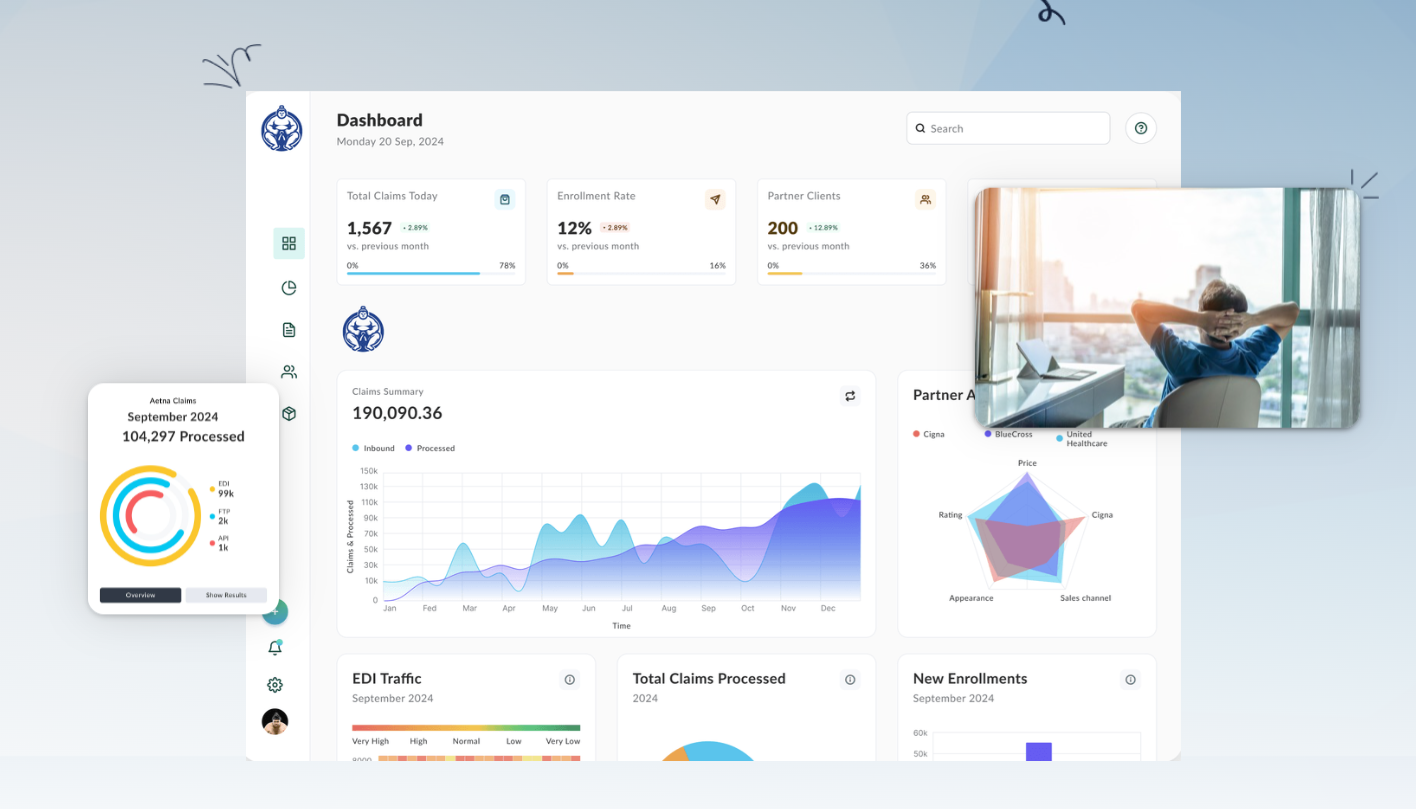5 Steps to Strengthen Data Security and Prevent Breaches in Healthcare EDI Systems


Healthcare payers operate in one of the most data-sensitive industries in the world, where the integrity, confidentiality, and timely availability of electronic data interchange (EDI) content isn't just a compliance checkbox—it's fundamental to trust, compliance, and operational efficiency. For those navigating the maze of HIPAA, GDPR, and the unrelenting threat landscape of data breaches, every step we take to secure our EDI systems translates directly into protected patient information, seamless claims processing, and a stronger organizational reputation.
1. Enforce Rigorous Data Encryption – At Rest and In Transit
In healthcare EDI, confidential data flows through countless endpoints. Encryption isn’t just recommended—it’s mandatory for both regulatory compliance and peace of mind. All sensitive eligibility and claims data must be encrypted:
- During transmission: Ensure asymmetric encryption and secure transfer protocols (such as SFTP, FTPS, or VPN tunnels) are in place between trading partners and internal systems.
- At rest: Utilize strong encryption algorithms on your backend databases and storage containers, so protected health information (PHI) is safe even if drives are physically compromised.
At EDI Sumo, we don't compromise on adopting advanced encryption standards, giving our clients a foundation of trust and compliance by design. We view strong encryption as an enabler for frictionless compliance with HIPAA and GDPR requirements.

2. Tighten Access Controls and Adopt a Zero-Trust Mindset
Not every member of an organization needs access to every record. The principle of least privilege should govern every user, application, and process:
- Role-Based Access Control (RBAC): Only authorized personnel should access, modify, or transmit specific datasets. Use RBAC to strictly delineate permissions at every step.
- Multi-Factor Authentication (MFA): Protect access portals against unauthorized logins and password leaks by enforcing MFA organization-wide.
- Comprehensive Audit Trails: Log every data interaction, from record views to data extracts, with searchable, tamper-evident audit logs for monitoring and post-incident investigations.
At EDI Sumo, our platform supports fine-grained, role-based access and integrates with OAuth2 and MFA technologies. We empower healthcare payers to adopt a zero-trust approach—verifying every request, every time.
3. Standardize and Monitor Data Flows in Real-Time
Fragmented data formats and manual interventions invite error—and open the door for breaches. Standardization and continuous monitoring are the backbone of secure EDI operations:
- Format Standardization: Convert incoming files—EDI 834, 837, CSV, XML—into a uniform, validated standard before further processing. Reduce manual mapping and automate data cleansing to weed out anomalies.
- Real-Time Monitoring & Alerts: Deploy a monitoring layer that tracks all file exchanges, detects anomalies (e.g., large data spikes, unexpected formats), and triggers automated alerts for potential threats or failures to meet SLAs.
- Automated Error Detection: Proactively catch discrepancies, duplication, and suspicious behavior at every stage of the EDI workflow, minimizing the window for malicious exploitation.
With EDI Sumo, our customers have real-time dashboards, automated alerts, and advanced monitoring that transform reactive operations into proactive guardians of sensitive data. SLAs are met and exceeded not by luck, but by design.

4. Automate Compliance and Reporting
Healthcare payers operate under intense scrutiny. Manual compliance tracking is error-prone and an invitation for fines and breaches. Automation in compliance delivers consistent assurance:
- HIPAA and GDPR Readiness: Ensure every data flow and storage practice aligns with up-to-date standards—no exceptions.
- Automated Audit Trail Generation: Capture every transaction, update, and exception in an immutable, searchable record. Not only does this support internal review, but it also simplifies responding to regulatory audits.
- Integrated Compliance Tracking: Use dashboards and scorecards for a visual, continually updated status on organizational compliance posture and system vulnerabilities.
We design our workflows to minimize administrative burdens while maximizing auditable transparency. EDI Sumo gives healthcare payers the confidence that every file, every exchange, and every process is audit-ready—so you’re never caught off guard.
5. Foster a Culture of Continuous Security Awareness
Technology alone is not enough. The human element is both the weakest and the strongest link in data security. Equip teams with the tools and mindset to spot and report threats before they escalate:
- Ongoing Training: Regularly update staff on evolving phishing tactics, social engineering threats, and internal best security practices.
- Incident Response Playbooks: Ensure every staff member knows exactly what to do—and who to notify—at the first sign of trouble.
- Collaborative Security Reviews: Make security a team sport, encouraging inter-departmental feedback, vulnerability reporting, and improvement cycles.
We’ve seen firsthand how empowering teams—not just IT—improves response times and reduces the risk of costly breaches or compliance violations.
Conclusion: Proactive Security as a Business Enabler
Strengthening data security in healthcare EDI doesn’t have to slow your business down—in fact, it should do the opposite. By combining automated encryption, rigorous access controls, real-time monitoring, proactive compliance, and a culture of vigilance, data security becomes a strategic asset. At EDI Sumo, we live and breathe these principles every day. If you’re ready to transform EDI security from a compliance task into a source of competitive advantage, let’s connect for a conversation or a demo.


.png)





.png)

.png)


.png)
